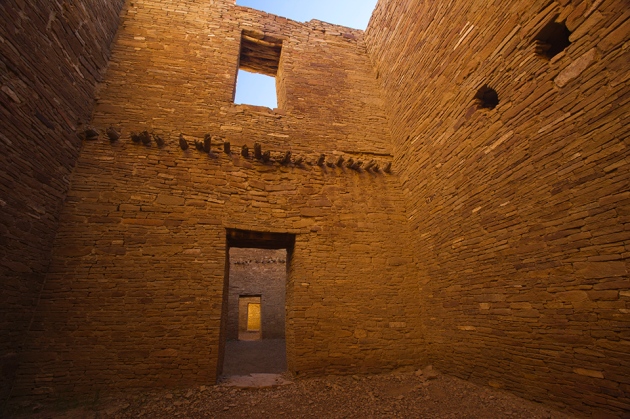
PHOTO: redorbit.com
CHACO CANYON, NEW MEXICO – research conducted on an ancient Native American site has revealed that early Southwestern Americans carefully cared for macaws in a specially-built aviary almost two-thousand years ago.
“People were doing their utmost to keep them alive.” – archaeologist Randee Fladeboe, archaeologist at the University of Florida.
We usually associate the brightly colored macaw with a tropical rainforest in South America, not in the desert of New Mexico, but archaeologists have found macaw bones all over the area. These birds, especially the highly-prized scarlet macaw, were often imported by prehistoric Native Americans – and rarely bred.
A recent study presented on March 31 at the Society for American Archaeology in Vancouver, Canada, found bones from three different prehistoric pueblos in New Mexico.
Macaws in ancient Native American cultures were signs of status. The birds were thought of as messengers from the underworld and bringers of rain. Owning a macaw feather or two was a bit like getting that golden ticket from Willy Wonka’s chocolate factory.
The catch about those macaw skeletons from New Mexico?
They all show tell-tale signs of organized feather-harvesting, proving just how extensive this love for their brightly-colored plumes was in the early AD 100s.

PHOTO: nature.com
Archaeologist Randee Fladeboe worked on the project. She examined the wing bones of 17 different macaws from three pueblos that had aviaries. Fifteen of those birds had little bumps on the upper part of their wing-bones, where the feathers would have grown.
Since a macaw’s feathers are rooted in the bone, yanking on them and pulling them out creates scar tissue on the skeleton. The bones show multiple feather losses along the entire length of each wing. Clearly, it was a methodical process, not an accident.
It would have been painful for the bird, but Fladeboe believes that the people looking after the macaws and harvesting them “did obviously care for the birds”, and that saying that they only cared for the birds for their feather output would be a “disservice”.
Why?
Well, at least one of the birds had been carefully hand-fed and protected from the others.
One skeleton showed signs of suffering from two broken wings – breakage that the archaeologist could determine had resulted from attacks from other birds, not humans. The bones were also irregular and spongy. The bird had been sick or malnourished originally. Fladeboe believes the Chaco had nursed the bird back to health, carefully hand-fed it, and sheltered it from the scrutiny of its own kind.
This isn’t uncommon for macaws held in captivity. Macaws get easily stressed out by being in captivity, and zooarchaeologist Meredith Wismer explained that they often display “self-destructive and otherwise aggressive behavior, making them quite difficult to care for.”
Happy macaws make prettier feathers. This would have encouraged the Chaco to care for the birds even better.
Few animals besides dogs and, rarely, cats have so closely coincided with prehistoric human civilization. Radiocarbon data shows that the Chaco kept macaws for nearly a thousand years, right up until the collapse of their civilization in the early 1100s.
Other archaeologists and zooarchaeologists believe Fladeboe’s claim that the Chaco were farming the macaws for their feathers is credible. She intends to further support her claim later with data she’ll gather by doing a computerized tomography scan of the birds’ bones later this year. For now, it looks like she’s got a pretty good case.

